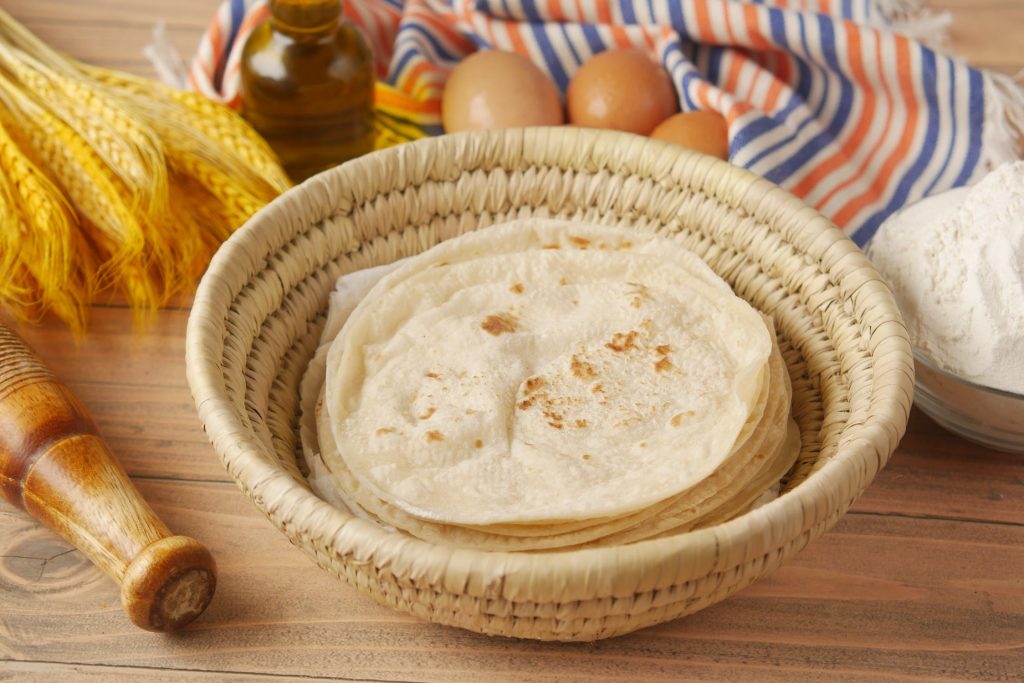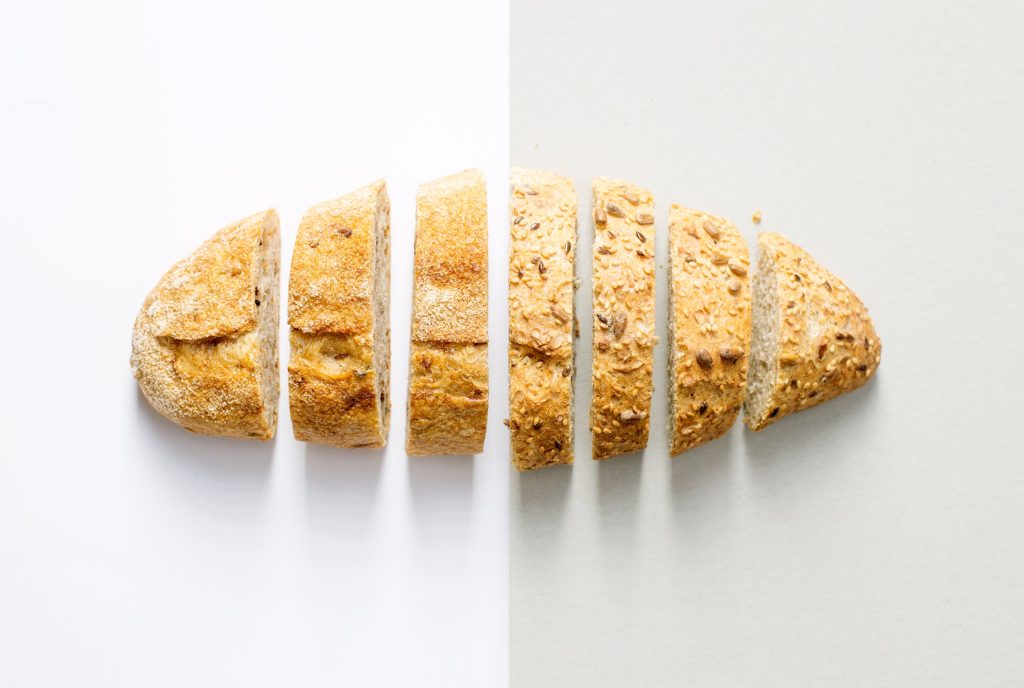From Chapati to Bread: Of New Dietary Belongings
AUTHOR
Sakshi Dogra
Eating food that is not prepared at home is a significant kind of eating that has risen with the growth of restaurants and cafés (Bhatia, 2022). While family meals are an interesting situation allowing us to study the relationship between food content and social setting, equally important are other situations of eating such as snacking, eating alone, eating away from home, and eating informally. Food eaten in the privacy of the home has received much attention and animated a long and rich tradition of analysis on the axes of class, caste, race, gender, and sexuality (Malhotra, Simi et.al., 2021). But it is interesting also to see how food reconfigures public space. In that vein, it remains to be answered whether public edibility brings with it feelings of release and autonomy. This essay will closely analyse Salman Rushdie’s non-fictional work ‘On Leavened Bread’ to trace the ethos determining contemporary eating-feeding relations. I conclude by maintaining that in urban public alimentary culture there is a disavowal of nostalgic culinary identity.
Rushdie’s writings, taking up themes of exile, alienation, and cultural identity, are crucial to the corpus of Indian Writing in English. The particular prose narrative ‘On Leavened Bread’, when looked at specifically through the lens of food and taste, tells a story of new dietary belongings and affiliations, in the context of a porous and globalised world. Here, the representation of food is not about any given predisposition or inclination to local food peculiarities such as chutney and spices which otherwise abound in Salman Rushdie’s oeuvre. In this piece, it is the globally standard leavened bread that captures the Indian-born British-American novelist’s imagination.
In the text, Rushdie confesses his love for leavened bread. He begins the narrative by furnishing his disdain for the “real”, local breads such as phulka and chapati. He finds them completely bland. He is equally critical of the leavened breads he finds in Mumbai which, as he tells his readers, are “dry” and “crumbling”. Rushdie’s search comes to another disappointing halt when the breads he finds in Karachi also prove below par. It is only when he reaches Britain that he finds his model leavened bread. Very slowly and subtly, Rushdie unravels this scene of finally finding the ideal bread and the experience of tasting it. The piece captures his encounter with restaurants and bakeries in London, a space where learned values and practices are contested, where he chooses to act on his desire to consume leavened bread, departing from the secure flavours of home.

The anecdote goes on to demonstrate how a novel sensory experience of eating bread mobilises in Rushdie a desire to visit bakeries and abandon chapatis:
“Then aged thirteen-and-a-half, I flew to England. And suddenly, there it was in every shop window. The White Crusty, the sliced and the unsliced. The Small Tin, The Large Tin, the Danish Bloomer. The abandoned, plentiful promiscuity of it. The soft pillowy mattressiness of it. The well sprung bounciness of it between your teeth. Hard crust and soft centre: the sensuality of that perfect textural contrast. I was done for. In the whorehouses of the bakeries, I was serially, gluttonously, irredeemably unfaithful to all those chapattis-next-door waiting for me back home. East was East but Yeast was West” (4).
This sensorial representation shows that leavened bread becomes a whole world for Rushdie, a total social fact deriving from affect. Given that the places or habitual geographical coordinates that the author is predisposed to are also rendered expendable by virtue of this encounter. It is only the taste and the feeling of the leavened bread that matters, its crusty, pillowy and bouncy texture. This taste and feeling of the bread animates the refutation of the integrity of the family unit represented in the rejection of “chapattis-next-door waiting for me back at home” and a subsequent affirmation of the autonomy of actions and identity.
Rushdie finally insists that bread “be part of daily life”, because “you want it to be there” —the taste and feeling of bread, discovered in this new context, yield a certain sensory shift for him, evoking a desire for the routinization of its consumption. Not just that; Rushdie’s rather concise account of his attachment to not just bread but also bakeries focalises the role of restaurant environments and the desire for their omnipresence.

Rushdie employs the metaphor of the “whorehouse” to encapsulate the often transgressive, licentious and unrestrained nature of eating-out establishments. This playful figurative expression shows that situations of dining out allow for interaction between humans, objects, and affects that collectively moulds consumption behaviour. This is to say that the look and feel of the environment of the restaurant (much like the taste and feeling of the bread) allows the eating public to think with their bodies and in the process sensuously realigns them. The significance of ambience and atmosphere in eating out experiences, therefore, gestures at a transformation of tastes.
Restaurants, cafes, and other spaces of dining out have become a common feature of urban lived reality. They make a small world possible, moving past traditional ways of being. The changing landscape of eating spaces, along with situations and scenes of eating, shows the increasing ordinariness of restaurants and their potential to create new worlds which can be free of traditional cultural affiliations. In conclusion, this short essay tries to argue spaces of eating-out are capable of generating new intuitions and new kinds of gastronomical affinities. Such new dietary belongings and fidelities, as Rushdie’s piece shows, are significant in their disavowal of nostalgic culinary identity and in the creation of post-ethnic affiliations and worlds.
Bibliography
Bennett, Jane. Vibrant Matter: A Political Ecology of Things. Duke University Press, 2010.
Bhatia, Anjali. “The Journey since 1947-IV: Eating Out Comes of Age in India”. The Indian Forum: A Journal-Magazine on Contemporary Issues. https://www.theindiaforum.in/history/journey-1947-iv-eating-out-comes-age-india. October 18, 2022.
Highmore, Ben. “Bitter After Taste: Affect, Food and Social Aesthetics”. The Affect Theory Reader, edited by Melissa Gregg and Gregory J. Seigworth, Duke University Press, 2010, pp. 118-137.
Highmore, Ben. Ordinary Lives: Studies in the Everyday. Routledge, 2011.
Highmore, Ben. “Taste as Feeling” in New Literary History, vol. 47, no. 4, Autumn 2016, pp. 547-566,
Project MUSE, doi:10.1353/nlh.2016.0029.
Malhotra, Simi., Dogra, Sakshi., & Sharma, Kanika. Food Culture Studies in India. Consumption, Representation and Mediation. Springer. 2021
Mol, Annemarie. Eating in Theory. Duke University Press, 2021.
Rushdie, Salman. “On Leavened Bread”. A Matter of Taste: The Penguin Book of Indian Writing on Food, edited by Nilanjana S. Roy. Penguin Books, 2004.
About the Author
Sakshi Dogra currently teaches English literature and language at Gargi College, University of Delhi as Assistant Professor. She is simultaneously pursuing her Ph.D. research titled “Food, Feelings and Flavors: A Study of Contemporary Indian Writing in English on Food” wherein she seeks to bring out a synthesis of affect and taste through an analysis of an indispensable consumption practice of ingesting food. She is broadly interested in affect theory; study of moods and atmospheres; emotions, feelings and their function in constituting people and cultures. She is the co-editor of Food Culture Studies in India: Consumption, Representation and Mediation and Inhabiting Cyberspace in India: Theory, Perspectives and Challenges, both published by Springer Nature. Her forthcoming co-edited collection of papers titled Affective World Making: Routing Planetary Thought is to be published by Routledge, New Delhi, India. Sakshi has presented papers in national and international conferences on the subject of food.

